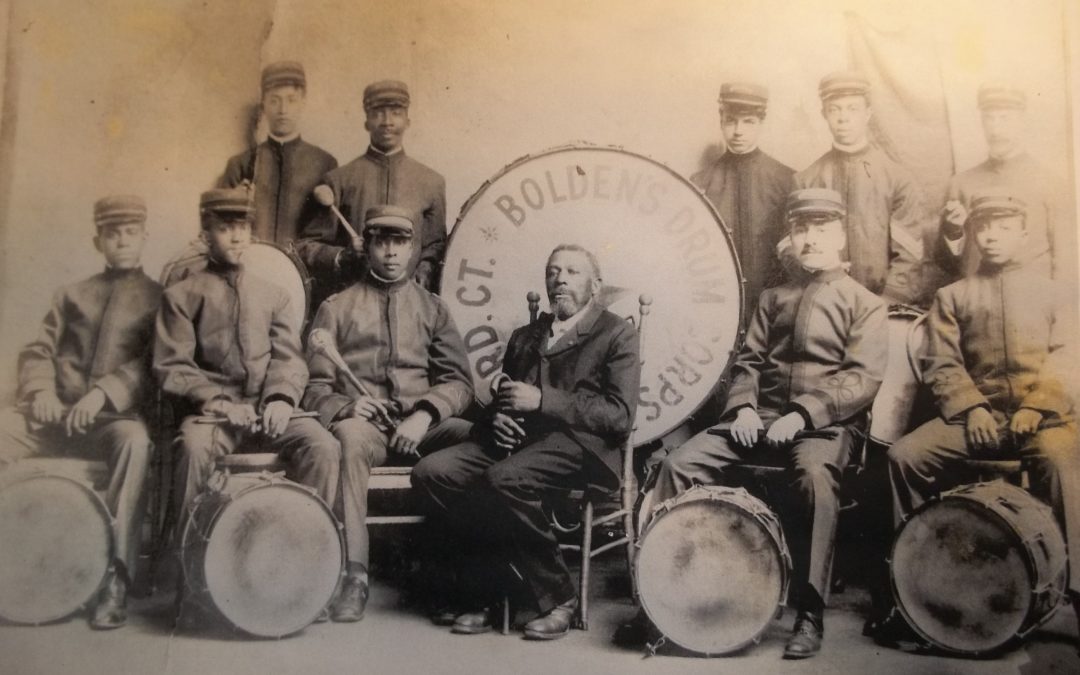Out of all the modern day instruments, none has a longer history than the drum. Drums are found throughout the world, in practically every culture, and are known to have existed since at least 6000 BC. Almost everywhere they have strong ceremonial, sacred, or symbolic associations. In much of Africa, certain drums symbolize and protect tribal royalty and are often housed in sacred dwellings. In fact you can say the drum was actually the first form of telephone. Tribes, with use of the drum would communicate with other tribes often miles away.
Drums frequently were used for signaling of meeting, dangers, etc. The talking drums of Africa imitate the pitch patterns of language and transmit messages over many miles. In Europe, The Timpani were associated with royalty as late as the 17th century. Throughout Central Asia and Siberia and among some Native American tribes of North America, shallow frame drums with one or two heads serve as ritual instruments for shamans (medicine men).
The tambourine,
a single-headed frame drum with or without jingling metal disks set in its frame, was traditionally a woman’s instrument
in Islamic countries, as it was in ancient and prehistoric times and in medieval Europe. The snare drum, or side drum, used in European
infantry regiments, coded instruction calls to Soldiers during many different battles and wars.
The Drum Set:
The first drum sets were assembled in the late 1800s after the invention of the bass drum pedal, which enabled all of the basic percussion instruments used in a military band (snare drum, bass drum, and cymbals) to be played simultaneously by one person.
In the late 1920’s the drum set evolved further when drummers who played in the nightclubs of New Orleans, Louisiana, began using the drum set to provide creative accompaniment for other jazz musicians. The set quickly expanded with the additions of instruments such as African-derived tom-toms, a variety of Turkish- and Chinese-style cymbals (the two types are shaped differently to produce different sounds; Turkish cymbals are standard in most Western music), and the hi-hat cymbal, one of the most important innovations. These and subsequent refinements led to new techniques pioneered.
In the 1930’s American Gene Krupa, one of the greatest jazz drummers of the big-band era featured the tom-toms prominently in his playing and established the drum set as a featured solo instrument.
In the 1940’s American Max Roach,another great jazz drummer and innovator, tuned his drums higher (by tightening the drum heads) and shifted the rhythmic emphasis from the bass drum to the cymbals, particularly the ride cymbal. This technique allowed for more flexible use of the bass drum and other parts of the drum set.
In the 1950’s American jazz drummer Louis Belson popularized the use of two bass drums in his drum set, a technique revived.
In the 1960’s by British drummers Ginger Baker, of the rock trio Cream, and Keith Moon, of the rock group the Who, and by American jazz-rock drummer Billy Cobham. This setup is still used by many rock drummers.
In the late 1960’s American Buddy Rich considered one of the greatest big-band drummers in jazz history, demonstrated unprecedented speed and dexterity on the drum set. Through the 60s and there forward they improved recording techniques significantly with greater amplification of instruments brought about by rock music enabled drummers to play much louder, no longer in danger of overpowering other instruments. With advancements in manufacturing technology, drums were made of stronger, more compact materials and were capable of being played even louder. Drum heads also were improved, with more durable and dependable plastic heads replacing calfskin. From there the drum set continued to evolve throughout
In the 1970’s with the great the great Jon Bonham of Led Zeppelin and also of course Neil Peart of Rush leading the way!, 80s, and into the present, influenced to a great extent by changes in popular music, along with advancements in technology. Modern rock-music drum sets may include three, four or more tom-toms as well as a variety of auxiliary percussion instruments.
In the 1980’s brought about the electronic drums they really came on the scene and now are often used for recording and low volume level practice. (they are now called Midi drums an acronym for (musical instrument digital interface) When struck, the pads trigger reproductions of the digitally stored sounds of the individual components of the drum set, such as the snare, bass drum, hi-hat, etc… within electronic drum machines, in which sounds traditionally were triggered by pressing keys or buttons, but now are able to be played by drum trigger pads they are frequently used to supplement or even replace the sound of the traditional drum set, especially in pop and easier listening type’s of musical recordings.
Since that time the drums have served as the driving force behind such music as jazz, blues, R&B, rock and modern pop music. Drum lessons will give students a chance to learn the fundamentals of rhythm. From there, the student can choose the music of their liking, and be taught in almost any style. The drum lessons I have designed are crafted to maximize a student’s ability to play steady rhythm while giving them the chance to express themselves physically and creatively.


This info is the cat’s paajams!
I blog frequently and I truly thank you for your information. Your article has truly
peaked my interest. I will bookmark your site and
keep checking for new information about once per week. I subscribed to your
Feed too.
Pretty! This was a really wonderful post. Thanks for
supplying this info.
To make music for solders in the war.
To talk to people and to communicate.
Religious reasons.
This is a cool website
Three ways that drums were used over time were: In a military band, as a telephone, and signaling a meeting or danger ect.
So many good posts i read here, i think you can make ocdrumschool.com go viral easily using one tricky method.
Just search in google:
Ildis’s Method To Go Viral
This site certainly has all oof the info I needed concerning this suvject and didn’t
know who to ask.